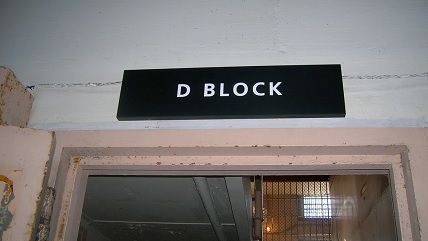Did California Prop. 47 Cause State Crime Boost?
Crime reformers say no, but law enforcement ready to pin blame

As the national consumption of margarine increases, so, too, does the divorce rate in Maine and vice versa. Between 2000 and 2009, in fact, those two seemingly unrelated sets of data correlate with eerie precision. Over the same time period, the more Americans buy Japanese cars, the more people commit suicide by crashing their vehicles.
These correlations are irrefutable, yet ridiculous. Who could claim that eating margarine causes people to file for divorce? I gleaned these statistical absurdities from the website of the author of a book called Spurious Correlations. Its subtitle echoes a maxim common among statisticians: "Correlation does not equal causation."
That well-known phrase is worth remembering as Californians analyze the results of Proposition 47, a statewide initiative passed last year that has led to the release from prison and jails of 13,000 offenders. Mainly, it reduced the punishment for a handful of drug and property crimes by reclassifying them from felonies to misdemeanors.
Since the initiative's passage, crime rates have gone up in California, especially in the state's 10 largest cities. Law-enforcement officials, including San Diego Police Chief Shelley Zimmerman, have been blaming the new voter-approved law for the crime increases. Certainly, there's nothing ridiculous about asserting that letting more offenders out on the street might lead to higher crime rates. But just because the correlation exists and the theory is plausible doesn't prove causation.
A November study by the Stanford Justice Advocacy Project looks at the data to date. "The correlation that is suggested by some law enforcement officials, frankly, does not square with the available data, and, certainly, the data that has been released by state agencies… indicates that those who've been released early under Proposition 47 are not responsible for the crimes being reported," argued the project's director Michael Romano.
The Stanford report points to a recidivism rate of 5 percent among those released under the new law, far below the state's typical 42 percent rate. The advocacy project helped draft the initiative, so it's hardly an unbiased source here. Then again, many of the police agencies blaming the proposition for the crime hikes had been strong opponents of it.
Another Proposition 47 backer, the American Civil Liberties Union of California, also looked at the existing data (gleaned from counties, probation departments, health agencies and sheriffs' departments across the state). It released a report last month that calls the measure a success based on reduced incarceration rates and predicted cost savings.
"The fact is that it's way too early to assess 2015 crime rates in California at all, let alone potential causes," according to the report. ACLU officials have, however, argued that some law-enforcement officials are resistant to the initiative's changes, which has resulted in spotty implementation.
The group proposed a variety of ideas to help boost its success. For instance, the ACLU calls for giving police "more options than to arrest," and pointed to cities in other states that let police officers divert petty drug offenders, prostitutes and other low-level offenders directly into treatment and mental-health programs rather than jail.
The Los Angeles Times recently asked in an editorial what the Los Angeles County sheriff's department and district attorney's office have been doing with the extra money from Proposition 47, given the reduction in arrests and incarceration rates: "It is in the nature of bureaucracy… For increases in workload to be accompanied by demands for more funding but decreases in workload to be absorbed without anyone offering up or even acknowledging their savings."
But if law-enforcement agencies do realize savings, that frees up money that can be used for the kind of programs the ACLU report detailed. The Association of Deputy District Attorneys disputes the notion of cost savings, by arguing that costs simply have been shifted around.
Proposition 47 isn't the only major reform that has softened California's tough approach toward crime and incarceration. The Brown administration implemented a "realignment" program that has moved prisoners from state penitentiaries to the county jails (and included early releases) to comply with a federal court order to reduce prison overcrowding. Voters also reformed California's toughest-in-the-nation Three Strikes law in 2012.
Crime rates have generally fallen since those two far-reaching criminal-justice-related reforms. The Public Policy Institute of California last year noted that state violent crime rates are at their lowest level since the 1960s and property crime rates are near record lows. Those latter rates spiked in 2012, but then continued their hard-to-explain free fall.
Of course, the correlation between falling crime rates and criminal-justice reform may be as specious as those previously mentioned oddball comparisons, or the premature declaration that Proposition 47 is the culprit in recent increases. When it comes to crime and recent policy changes, Californians might just need to wait for more data.




Show Comments (16)